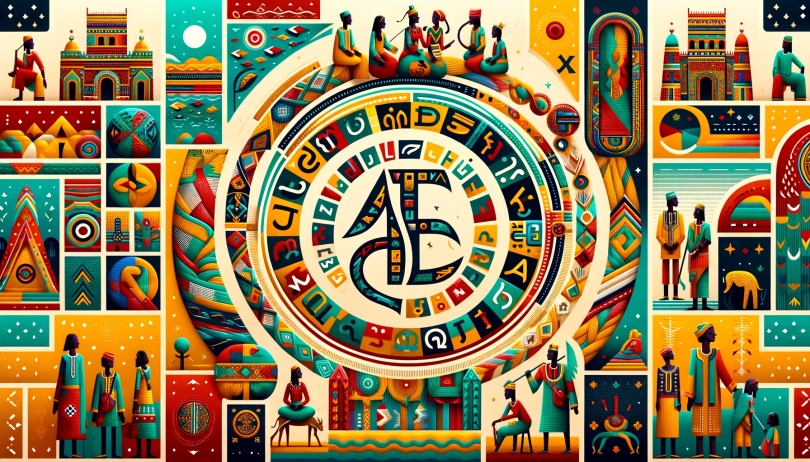The Wolof language utilizes a subset of the Latin alphabet, omitting some letters used in English and including additional characters or diacritics for sounds specific to Wolof. Here is a simplified representation of the Wolof alphabet and its phonetic guide:
| Letter | Phonetic Representation |
|---|---|
| A | /a/ as in ‘father’ |
| B | /b/ as in ‘bed’ |
| C | /ʧ/ as in ‘church’ |
| D | /d/ as in ‘dog’ |
| E | /e/ as in ‘bed’ |
| É | /eɪ/ as in ‘cafe‘ |
| F | /f/ as in ‘fun’ |
| G | /g/ as in ‘go’ |
| I | /i/ as in ‘machine’ |
| J | /ʤ/ as in ‘judge’ |
| K | /k/ as in ‘kite’ |
| L | /l/ as in ‘lip’ |
| M | /m/ as in ‘man’ |
| N | /n/ as in ‘nose’ |
| Ñ | /ɲ/ as in ‘canyon’ |
| O | /o/ as in ‘more’ |
| P | /p/ as in ‘pen’ |
| R | /r/ as in ‘roll’ |
| S | /s/ as in ‘snake’ |
| T | /t/ as in ‘top’ |
| U | /u/ as in ‘rule’ |
| W | /w/ as in ‘water’ |
| X | /x/ as in ‘loch‘ |
| Y | /j/ as in ‘yes’ |
It’s important to note that the pronunciation of some letters may vary slightly based on dialect and context within Wolof speech. Additionally, certain letters like “H,” “Q,” “V,” “Z,” are not traditionally part of the Wolof alphabet, as the language’s phonetic needs are met without these sounds. The inclusion of diacritics such as “É” and “Ñ” highlights the specific phonetic requirements of Wolof that are not present in the English language or in the basic Latin alphabet. This tailored alphabet allows for a more accurate representation of Wolof phonology in written form.
The Wolofal writing system represents a fascinating aspect of Senegal’s linguistic heritage, showcasing the innovative use of the Arabic script to transcribe the Wolof language. Developed in the early 20th century by Islamic scholars, or “Marabouts,” Wolofal was primarily used for religious texts, poetry, and other forms of written communication among the Wolof-speaking Muslim community. This system illustrates a unique blend of Islamic culture with Wolof linguistic traditions, enabling speakers to access religious education and literary works in their native language. The adaptation of the Arabic script to accommodate Wolof phonetics involved the creation of special characters and modifications to existing ones, thereby enriching the script’s capacity to express the nuanced sounds of Wolof. Despite the challenges of standardization and limited formal recognition, Wolofal remains a vital part of Senegal’s cultural and linguistic landscape, embodying the resilience and adaptability of the Wolof language and its speakers.
Clicking on links in the Pronunciation column will open the respective Wikipedia page in a new tab.
| Wolofal letters | Variants | Latin letters | Pronunciation |
|---|---|---|---|
| ب | b | [b] | |
| ݖ | چ, جۛ | c | [c] |
| د | d | [d] | |
| ف | ڢ | f | [ɸ] |
| گ | g | [ɡ] | |
| ه | h | [h] | |
| ج | j | [dʒ] | |
| ک | k | [k] | |
| ل | l | [l] | |
| م | m | [m] | |
| ن | n | [n] | |
| ݧ | ñ | [ɲ] | |
| ݝ | ݤ | ŋ | [ŋ] |
| ݒ | پ | p | [p] |
| ق | q | [q] | |
| ر | r | [ɾ] | |
| س | s | [s] | |
| ت | t | [t] | |
| و | w | [w] | |
| خ | x | [x] | |
| ي | y | [j] |
The Garay alphabet is a unique writing system developed for the Wolof language by Assane Faye, a Senegalese artist, in 1961. Unlike the Latin or Arabic scripts traditionally used for Wolof, the Garay script was designed specifically to reflect the phonetic characteristics and cultural aspects of the Wolof language. While not widely adopted, the Garay alphabet represents an important effort towards creating a distinct written form for Wolof that is closely tied to its linguistic and cultural identity.
For more detailed information on the Garay alphabet, visit the Wikipedia page on the Garay alphabet.
